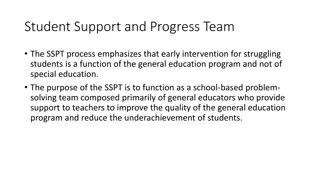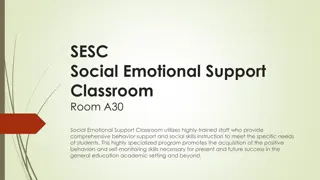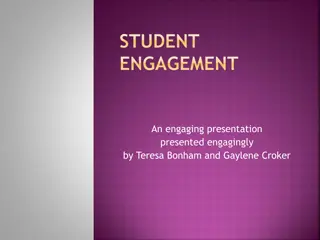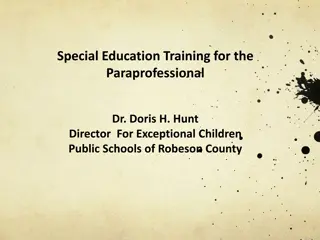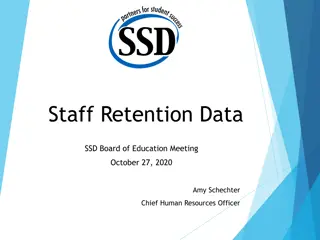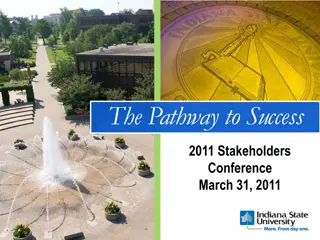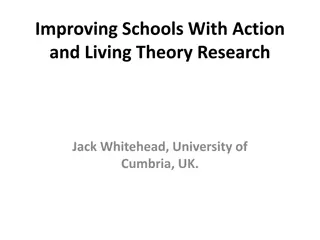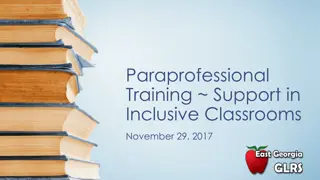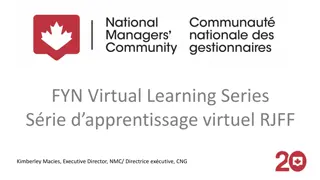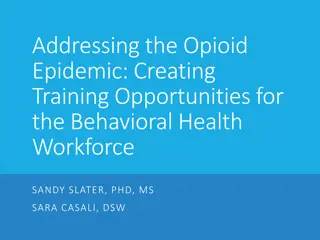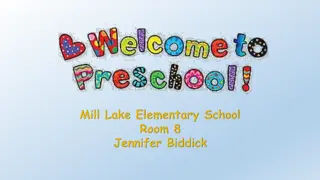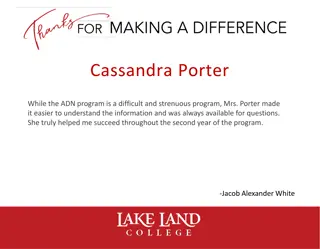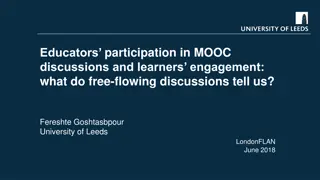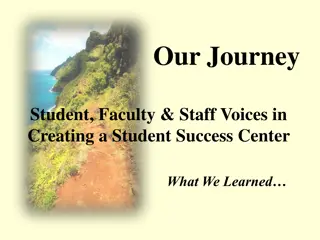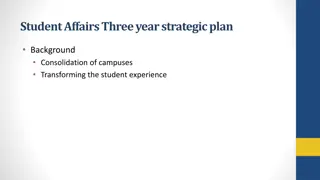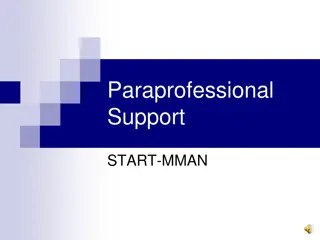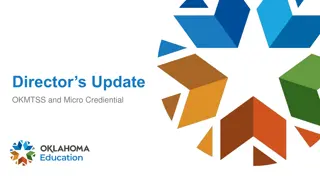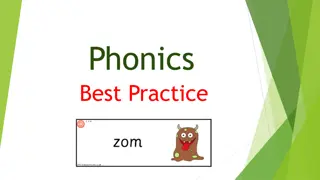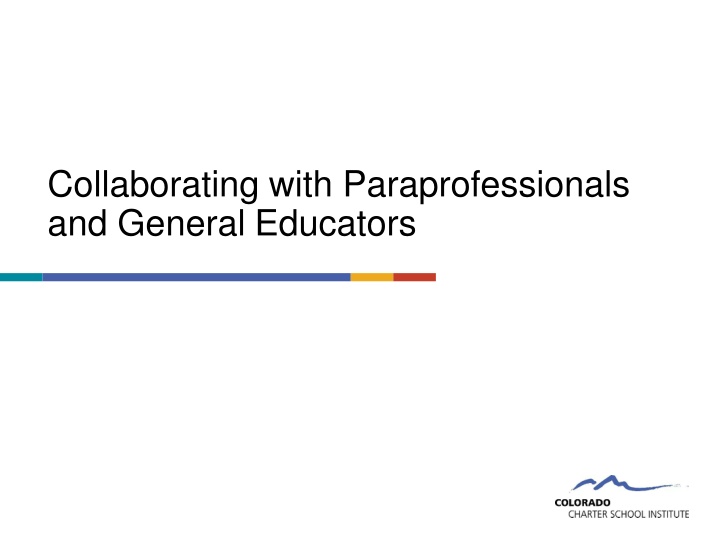
Collaborating with Paraprofessionals and Educators for Student Success
This resource outlines the shared responsibilities among general educators, special educators, and paraprofessionals for meeting the instructional needs of all students, implementing IEPs effectively, and fostering an inclusive and safe learning environment. It emphasizes collaboration, individualized instruction, and effective communication within the education team.
Download Presentation

Please find below an Image/Link to download the presentation.
The content on the website is provided AS IS for your information and personal use only. It may not be sold, licensed, or shared on other websites without obtaining consent from the author. If you encounter any issues during the download, it is possible that the publisher has removed the file from their server.
You are allowed to download the files provided on this website for personal or commercial use, subject to the condition that they are used lawfully. All files are the property of their respective owners.
The content on the website is provided AS IS for your information and personal use only. It may not be sold, licensed, or shared on other websites without obtaining consent from the author.
E N D
Presentation Transcript
Collaborating with Paraprofessionals and General Educators
Agenda Sharing Responsibility (5 minutes) Share Best Practices (15 minutes) Common Challenges Gallery Walk (30 minutes) Compliance: FACQs (5 minutes) Resource Bank and Questions (5 minutes)
Reference: Shared Responsibility GeneralEducator SpecialEducator Paraprofessional Meet universal instructional needs (plan and teach differentiated lessons) Participate on IEPteam Take ownership in IEP by planning accessible lessons and implementing accommodations Ensure access to curriculum and assess progress towards grade level standards Create a climate ofinclusion andsafety Monitor effectiveness of supports and givefeedback to special educationteam Meet targeted instructional needs (plan, design, supervise and deliver specializedinstruction) Mobilize IEP team, coordinate deadlines and lead familycommunication Share IEP snapshotsand BIPs withstakeholders Design supports toenable access to curriculum and individualgrowth Teach and modelbest practices forparas Ensure that IEP isfollowed acrosssettings Evaluate progress and adjust supports asneeded Meet individual instructional needs (implementspecialized instruction) Collaborate with IEPteam Get to know students snapshots, BIPs,strengths andinterests Monitor health andsafety Assist with physicaland navigationneeds Facilitatesocialization ImplementBIPs Respond to crises and implement de-escalation techniques + Other duties as needed + Other duties as needed + Other duties as needed
Zooming In: Shared Responsibility General Educator SpecialEducator Paraprofessional Meet universal instructional needs(plan and teach differentiated lessons) for allkids Take ownership in IEP by planning accessible lessons andimplementing accommodations for all kids Meet targeted instructional needs(plan, design, supervise and deliver specialized instruction) Mobilize IEP team, coordinate deadlines, lead family communication, share snapshots and BIPs and ensure that IEP is followed across settings Meet individual instructional needs (implement specialized instruction) Collaborate with IEP team; get to know students snapshots,BIPs, strengths andinterests
Adding Dimension to the Pyramid Para:Individual Needs SpecialEducator: TargetedNeeds Gen. Ed.Teacher: UniversalNeeds
Teaming Tips Explicitly define roles. Connect all providers early. Develop systems for regular team communication (meetings, shared documents & threads). Identify areas of expertise and leverage them to make workflow more efficient. Set annual team and individual goals and monitor them regularly. Solicit mutual feedback and establish a culture of mistakes equaling growth.
Staff Preparation Tips Distribute and review snapshots and BIPs with all providers. Confirm understanding and solicit questions. Pair the review with snapshot documents. Develop a thumbnail overview of caseload assignments and key providers for admin. Advocate for paraprofessionals to attend school-wide and self-driven PD sessions. Educate your staff on workloads and critical timestamps. Ensure that all staff members who work together have a direct line of communication.
Planning Tips Educate your staff with user friendly tools and have them bookmark them. Develop explicit norms for meetings and communication. Have all members open anchor documents at the beginning of every meeting. Use an evolving agenda with standing & seasonal items. Hold planning time sacred (this requires administration buy-in). Always review recent data and work samples.
Provision Tips Make streamlined tools accessible (i.e., hardcopy accommodations buckets). Ensure that all team members have reviewed the lesson plans well in advance of class. Ensure adult distance, access to peers. Alternate roles during shared instruction so responsibilities are dynamic. Ask often, What went well? and What didn t? Normalize the didn t and adjust!
Common Collaboration Challenges 1. Gallery Walk: 10 minutes A. Circulate the gallery and offer suggestions tocommon scenarios. B. Return to the scenario that most resonates withyour experience. 2. Group Discussion: 8 minutes 3. Whole Group: 12 minutes
Scenarios #1: My co-teacher doesn t seem to invest in any of the tools I give her. She has little interest in understanding our kids different needs and insists that the only fair is equal (equal access and equal expectations for all). Meeting with her feels fruitless and like a waste of mytime. #2: The para I work with is stretched too thin to meet with me regularly; literally his schedule is back-to-back. Our teaming in the classroom ends up feeling clunky because we are not on the same page. He gets paid hourly, so I don t want to ask him to stay after school. I end up texting him, which I also feel badabout. #3: Our principal doesn t get special ed. They give us one extra planning period to co-plan and get all our paperworkcompleted. Then they assign all the extra duties to us, and we are the first to be pulled for subbing and emergencies. We are tired, working too many hours, and feel unseen. #4: As a para, I feel like I have the most specialized knowledge about my students and their families. I see and hear things that nobody else does and I have a lot of ideas, but I think others view me as a task master. I d like to increase my influence by sharing my expertise; not by adding more hustle. #5: As a general educator, I m being asked to do too much. I know everyone in the building is too busy, but isn t accommodating special needs the job of the special ed team? I have enough to do in terms of broad differentiation. I don t feel like it should be my job to modify lessons, fill out scales and attend planning and IEPmeetings. #6: As a para, I sometimes feel ill- equipped to tackle what comes my way. I often end up modifying lessons on the fly because the special educator is too busy to design them or intercepting severe behaviors because the dean is too busy. I don t mind stepping up I have a lot of instinct. But I m worried about liability, and tbh, I m burnedout!
Participant Solutions #1: Co-teacher is anon- believer: #2: Para and teacher aretwo ships passing in thehall: #3: Principal is overwhelmedor doesn t getit: Have hard discussionsaround: Roledefinition Co-teachingphilosophy Thelaw Universaldesign Leveraging personal strengths and compromise Re-evaluate paraschedule Make para collaboration a non-negotiable Use teams forcommunication Revisit student groupings to increase para capacity Use communicationlogs Present data to admin Connect admin to sped coordinator Share examples of systems and structures to improve compliance Explore case law andstate complaints together #4: Para is over-hustledand under-respected: #5: General educator missedthe inclusion part of the job description: #6: Para is protecting the frontline without anyarmor: Solicit regular para input around schedules and structures Involve para inlesson planning Invite para feedback around effectiveness of supports Facilitate paraPD Explicitly train paras on target goals, data collection and teaching strategies Ensure self-care and work/life balance Leverage paraexpertise Advocate for improved para pay andbenefits Don t assume competence; train, teach, collaborate Use PRIMbucket Highlight differentiation vs. inclusion Enlist admin in establishing inclusiveculture
Legal Requirements Special Educator: Has obtained full state certification as a special education teacher or passed the state special education teacher licensing examination and holds a license to teach in the state as a special educator. Paraeducator: A school employee who works in a school under an assigned certified or licensed teacher. Provides both instructional support and non-instructional services to students who may require individualized support to access their education.
Compliance: FACQ #1 Legally speaking, what duties can paras perform? *See the CSI para manual and previous table. Note the verbs: Teacher: Plan, design, supervise, deliver, coordinate, assign, ensure, evaluate Para: Reinforce, support, monitor, assist, follow, facilitate, implement, promote, respond
Compliance: FACQ #2 How do I document para services? Documentation ServiceDescription Examples Hygiene Escorting Seizure monitoring Behavioralreminders Executivefunctioning reminders Service Delivery Statement Daily needs and generalized support Small group math reinforcement One-to-oneessay collaboration Discreet executive functioning or social skills guidance Goal-driven direct instruction under the explicit guidance of a special education teacher Service Delivery Statement plusGrid
Resources CSI: CSI Special Education Resource Page: Scroll to the lower right corner under Paraprofessionals. See the Paraprofessional Handbook and two sets of modules- one set for paraprofessionals and one set for supervisors. State: CDE Library of On-Demand Resources: Under Target Audience, select Other District/School Staff and then under Topic, select Special Education. CDE Upcoming PD Opportunities: Under Target Audience, select OtherDistrict/School Staff and then under Topic, select Special Education. National/Other: Ed.gov IDEA Ed.gov Article Collection:Paraeducators Inclusive Schools Network/Stetson & Associates' Templates,etc... TIES' Guide to Implementing Paraprofessional Facilitation The IRIS Center

